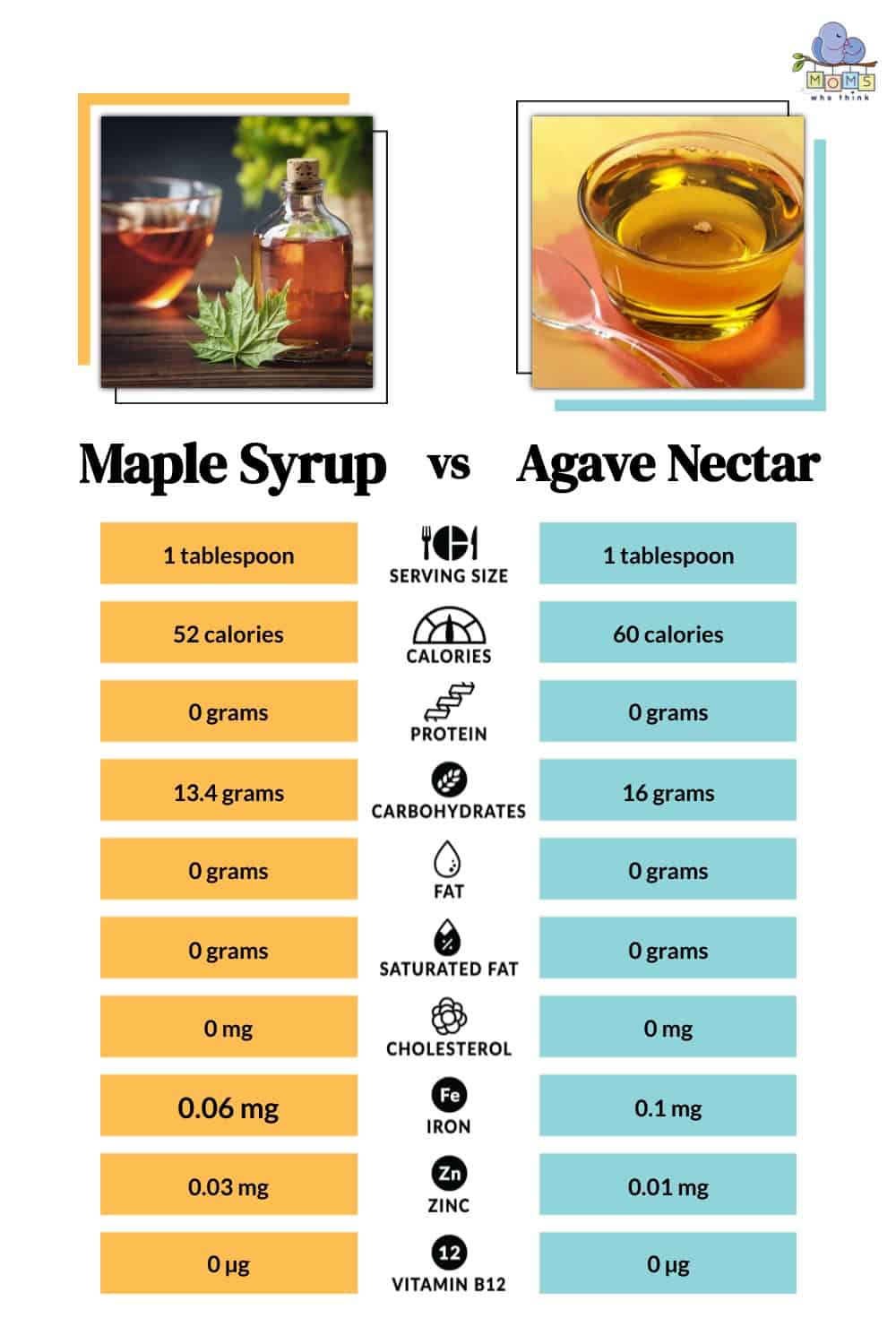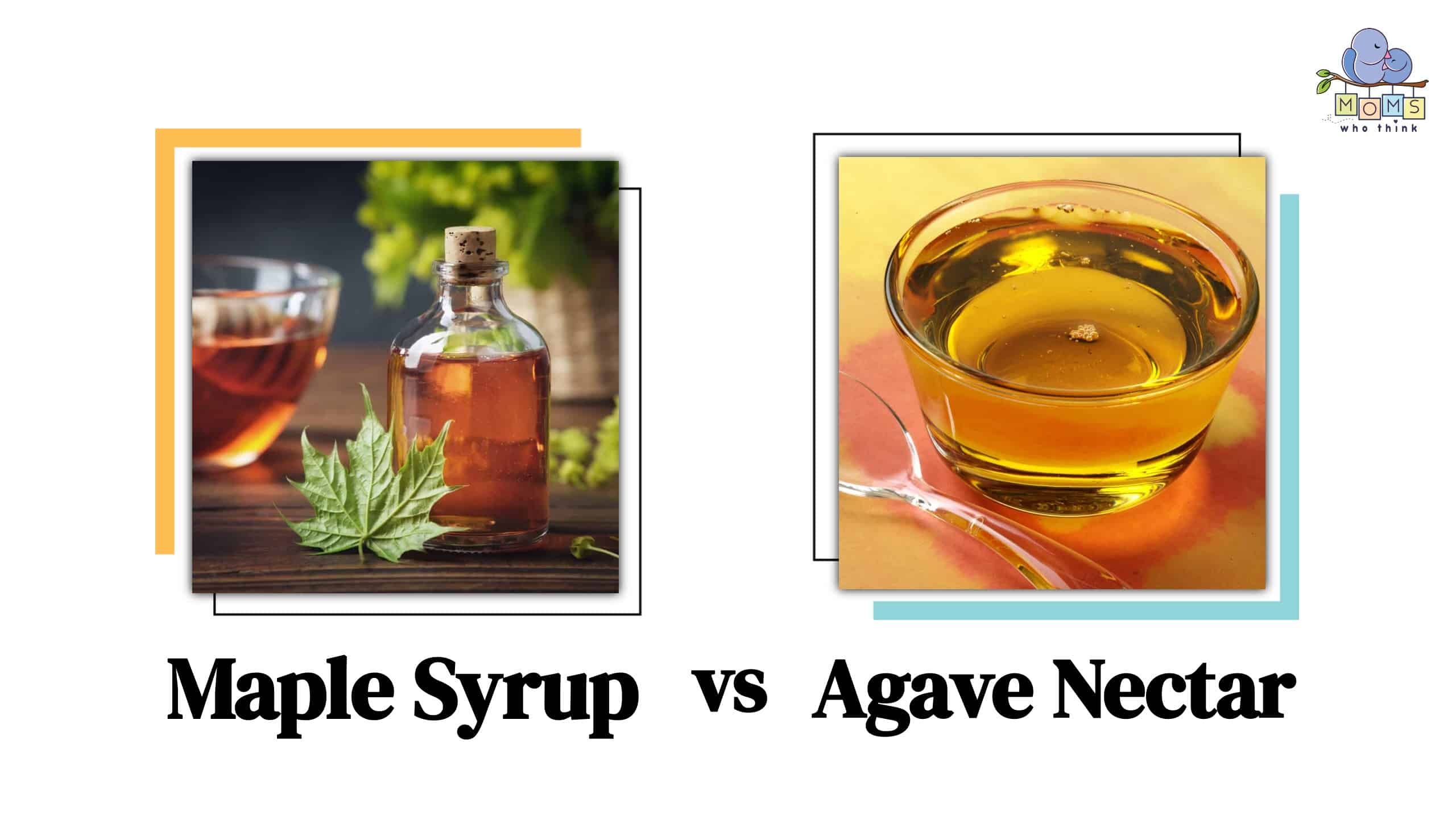In the world of natural sweeteners, maple syrup, and agave nectar often steal the spotlight. This is due to their unique flavors and perceived health benefits. Whether drizzled over pancakes or added to your morning coffee, these sweet syrups have become popular alternatives to traditional sugar. But when it comes to choosing between the two, which one should you reach for?
In this article, we will delve into the key differences between maple syrup and agave nectar. We will explore their nutritional profiles, taste, and potential impact on your diet. By the end, you'll have a better understanding of which sweetener might be the ideal fit for your culinary endeavors and dietary preferences. So, let's embark on a flavorful journey and discover the syrupy secrets that lie within maple syrup and agave nectar.
Maple Syrup vs. Agave Nectar: Exploring 6 Key Differences

In the following sections, we'll explore the six key differences between Maple Syrup and Agave Nectar. From their composition and flavor profiles to glycemic index and nutritional value, we'll uncover the unique characteristics that set these sweeteners apart.
1. Maple Syrup vs. Agave Nectar: Composition
Composition: Maple Syrup
Maple syrup is a natural sweetener made from the sap of various maple tree species, predominantly the sugar maple. It undergoes a process of boiling to remove excess water, resulting in a concentrated syrup with a distinct amber color and rich flavor. The composition of maple syrup is primarily composed of carbohydrates, with around 95% of its content being sugars, mainly sucrose. It also contains small amounts of minerals like calcium, potassium, and iron, as well as trace amounts of vitamins.
Composition: Agave Nectar
Agave nectar, also known as agave syrup, is derived from the agave plant native to Mexico. The syrup is made by extracting the sap from the core of the agave plant, which is then filtered and heated to break down complex carbohydrates into simpler sugars. Agave nectar is primarily composed of fructose, with levels ranging from 56% to 92%, depending on the variety. It has a lighter color and a more neutral flavor compared to maple syrup.
2. Maple Syrup vs. Agave Nectar: Sweetness and Flavor
Sweetness and Flavor: Maple Syrup
Maple syrup is derived from the sap of maple trees and is known for its rich, caramel-like flavor. It has a unique taste that is often associated with breakfast foods like pancakes and waffles. The flavor of maple syrup can vary depending on the grade, with darker grades having a stronger and more robust flavor.
Sweetness and Flavor: Agave Nectar
Agave nectar is made from the sap of the agave plant and has a milder, more neutral flavor compared to maple syrup. It is often described as having a subtle sweetness with hints of caramel or honey. Agave nectar is commonly used as a natural sweetener in various recipes and beverages.
3. Maple Syrup vs. Agave Nectar: Glycemic Index
Glycemic Index: Maple Syrup
Maple syrup has a glycemic index of around 54, which is considered moderate on the glycemic index scale. This means that it can cause a moderate increase in blood sugar levels when consumed. However, it is worth noting that the glycemic index can vary depending on factors such as the grade of maple syrup and the serving size.
Glycemic Index: Agave Nectar
Agave nectar has a lower glycemic index compared to maple syrup. It typically has a glycemic index ranging from 15 to 30, which is considered low on the glycemic index scale. This means that it causes a slower and more gradual increase in blood sugar levels compared to maple syrup.
4. Maple Syrup vs. Agave Nectar: Usage
Usage: Maple Syrup
Maple syrup is a popular natural sweetener that is commonly used in various culinary applications. It is primarily derived from the sap of maple trees and has a distinct sweet and rich flavor. Here are some common uses of maple syrup:
Pancakes and Waffles: Maple syrup is a classic topping for pancakes and waffles, adding a delicious sweetness to these breakfast favorites.
Baking: Maple syrup can be used as a substitute for other liquid sweeteners like honey or agave nectar in baking recipes. It adds a unique flavor profile to baked goods like cakes, cookies, and muffins.
Drinks: Maple syrup can be used to sweeten beverages such as coffee, tea, smoothies, and cocktails.
Sauces and Glazes: Maple syrup is often used as an ingredient in sauces and glazes for dishes like roasted vegetables, grilled meats, and desserts.
Marinades: Maple syrup can be used as a base for marinades, adding a touch of sweetness and flavor to meats, poultry, and seafood.
Usage: Agave Nectar
Agave nectar is a sweetener derived from the agave plant, primarily grown in Mexico. It is known for its mild and neutral taste. Here are some common uses of agave nectar:
Beverages: Agave nectar can be used to sweeten beverages such as tea, coffee, smoothies, and cocktails.
Baking: Agave nectar can be used as a substitute for other liquid sweeteners like honey or maple syrup in baking recipes. It provides a subtle sweetness and moist texture to baked goods.
Sauces and Dressings: Agave nectar can be used as an ingredient in sauces, dressings, and marinades, adding a touch of sweetness and balancing flavors.
Raw Desserts: Agave nectar is commonly used in raw desserts like energy bars, raw cakes, and vegan desserts as a natural sweetener.
Beverage Sweetener: Agave nectar is often used as a sweetener in beverages like iced tea, lemonade, and flavored water.
5. Maple Syrup vs. Agave Nectar: Availability
Availability: Maple Syrup
Maple syrup is widely available in regions where maple trees grow, particularly in North America, especially in Canada and the northeastern United States. These areas have a long history of maple syrup production, making it relatively easy to find maple syrup in various forms and grades. Maple syrup is commonly found in grocery stores, supermarkets, specialty food stores, and online retailers. Also, during the maple syrup season, many local farms and producers offer maple syrup directly to consumers.
Availability: Agave Nectar
Agave nectar is primarily produced in Mexico, where the agave plant is native. It is also available in other countries, but its availability may vary depending on the region. In general, agave nectar can be found in most grocery stores, health food stores, and online retailers. Agave nectar is available in different forms, including raw and organic options. While it may be more commonly found in areas with a higher demand for natural and alternative sweeteners, it is becoming increasingly popular and is often included in the sweetener section of stores.
6. Maple Syrup vs. Agave Nectar: Nutritional Value
Nutritional Value: Maple Syrup
Maple syrup is primarily composed of carbohydrates, mainly in the form of sugars. It contains small amounts of minerals like calcium, potassium, and iron. Here are some key nutritional aspects of maple syrup:
Calories: Maple syrup is relatively high in calories, with around 52 calories per tablespoon.
Carbohydrates: It is a source of carbohydrates, providing around 13 grams of carbohydrates per tablespoon, primarily in the form of sugars.
Minerals: Maple syrup contains small amounts of minerals like calcium, potassium, and iron, although the quantities are not significant enough to provide substantial nutritional benefits.
Nutritional Value: Agave Nectar
Agave nectar is primarily composed of carbohydrates, with a high concentration of fructose. Here are some key nutritional aspects of agave nectar:
Calories: Agave nectar is also relatively high in calories, with around 60 calories per tablespoon.
Carbohydrates: It is a source of carbohydrates, providing around 16 grams of carbohydrates per tablespoon. This is primarily in the form of sugars, particularly fructose.
Fructose: Agave nectar has a higher fructose content compared to other sweeteners, including maple syrup and honey.
Maple Syrup vs. Agave Nectar: Which Is the Better Choice for Your Diet?
When considering whether maple syrup or agave nectar is the better choice for your diet, it's important to take into account various factors. This includes taste, nutritional content, and potential health implications.
Maple syrup is derived from the sap of maple trees and comes in different grades, each offering a distinct flavor and intensity. It contains various minerals and antioxidants, but it is still a source of sugar and should be consumed in moderation. On the other hand, agave nectar is derived from the agave plant and is known for its intense sweetness. It has a lower glycemic index compared to traditional sugar, but it is primarily composed of fructose and should also be consumed in moderation.
When it comes to choosing between the two, it ultimately depends on your personal preferences and dietary needs. If you enjoy the rich, robust flavor of maple syrup and appreciate its natural mineral content, it can be a great choice for you. However, if you prefer a sweeter taste and are looking for a sweetener with a lower glycemic index, agave nectar might be a better fit.
It's important to note that both maple syrup and agave nectar are still sources of sugar. Therefore, they should be consumed in moderation as part of a balanced diet. If you have specific dietary concerns or health conditions, it's always a good idea to consult with a healthcare professional or registered dietitian for personalized advice.
Can You Substitute Maple Syrup or Agave Nectar?
Best Substitutes for Maple Syrup:
Honey: Honey is a popular substitute for maple syrup and offers a similar level of sweetness. It can be used in a 1:1 ratio as a replacement in recipes.
Molasses: Molasses can be used as a substitute for maple syrup, especially in recipes that require a deeper, more robust flavor. It is recommended to use 1 cup of molasses for every 1 cup of maple syrup.
White and Brown Sugar Syrup: A mixture of white or brown sugar dissolved in water can be used as a substitute for maple syrup. This syrup can be made by combining equal parts sugar and water and heating until the sugar dissolves.
Best Substitutes for Agave Nectar:
Honey: Honey can be used as a substitute for agave nectar due to its similar sweetness. It can be used in a 1:1 ratio as a replacement in recipes.
Date Syrup: Date syrup, made from dates, can be used as a natural sweetener and substitute for agave nectar. It offers a similar consistency and sweetness and can be used in a 1:1 ratio in recipes.
Coconut Nectar: Coconut nectar is another alternative to agave nectar, offering a similar level of sweetness. It can be used as a substitute in a 1:1 ratio in recipes.
Remember, when substituting sweeteners, it's important to consider the flavor and consistency of the substitute and adjust the quantity accordingly to achieve the desired taste in your recipes.
Maple Syrup Recipes
Below are 3 delicious and unique recipes that each use maple syrup as a standout flavor! What’s even more fun is you can make all 3 dishes and create a perfectly delectable dinner for the whole family!
Maple Syrup Pork Chops
Sweet and savory flavor combinations are a current culinary trend, and the maple pecan pork chop dish embodies this perfectly. The maple syrup adds a delightful sweetness that perfectly complements the protein. The nuts contribute a nutty, buttery flavor, elevating the dish to new heights.
Candied Sweet Potatoes
Indulge in the delectable delight of candied sweet potatoes! With its rich, sweet flavor, maple syrup adds a touch of perfection to this mouthwatering dish, elevating it to a whole new level of deliciousness.
Maple Corn Fritters
Savor the crispy goodness of corn fritters! Its sweet, golden touch adds a delightful twist to these delectable treats, creating a harmonious balance of flavors that will leave you craving more.

